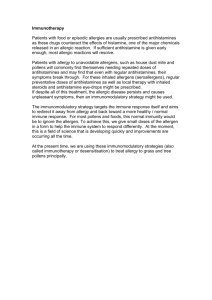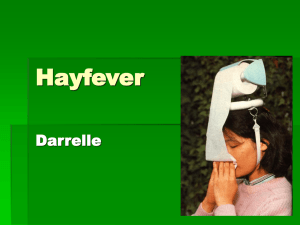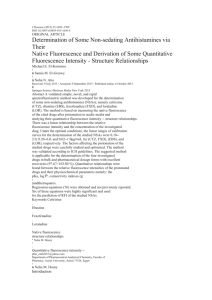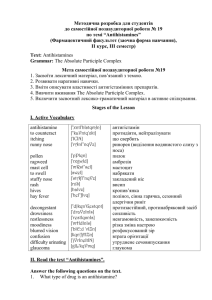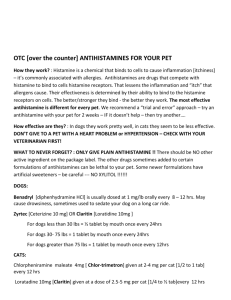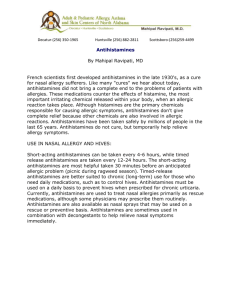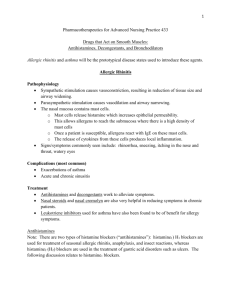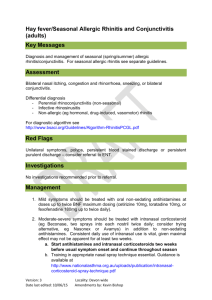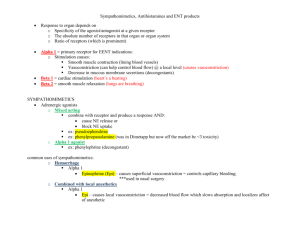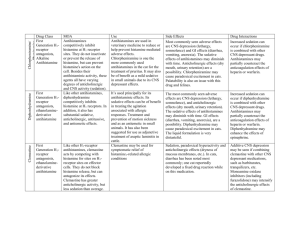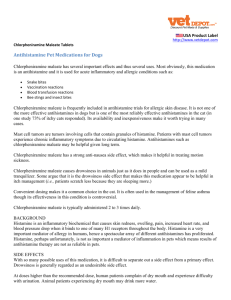The Family Practice Newsletter – May 2013 June 2013 Inside this
advertisement
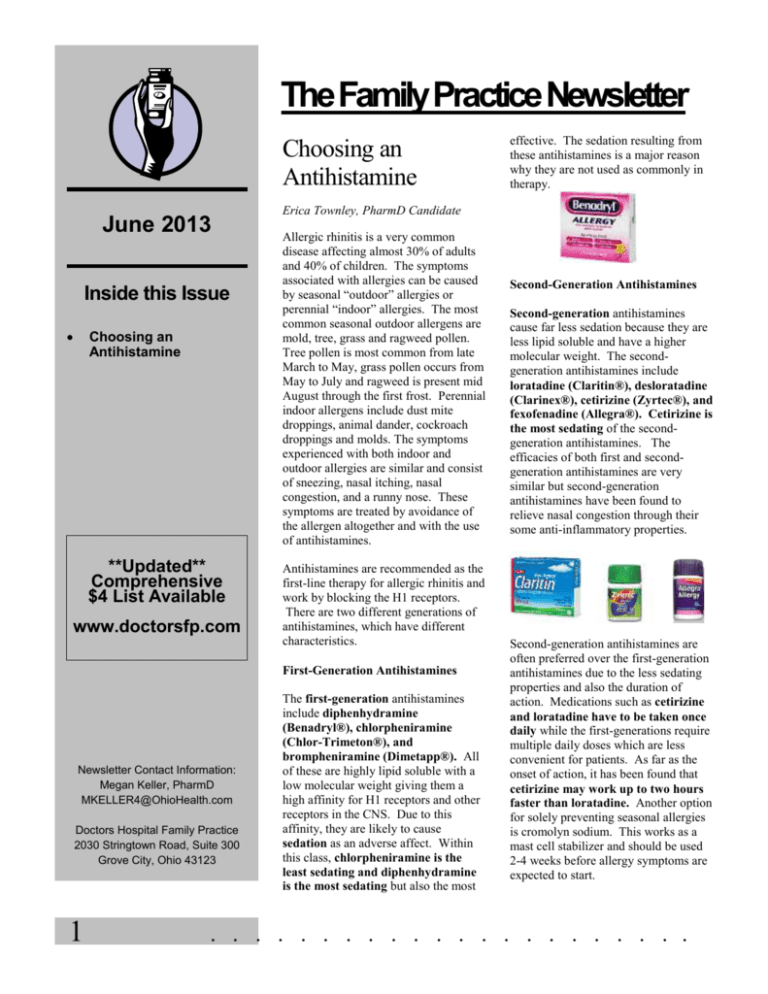
The Family Practice Newsletter Choosing an Antihistamine June 2013 Inside this Issue Choosing an Antihistamine **Updated** Comprehensive $4 List Available www.doctorsfp.com Erica Townley, PharmD Candidate Allergic rhinitis is a very common disease affecting almost 30% of adults and 40% of children. The symptoms associated with allergies can be caused by seasonal “outdoor” allergies or perennial “indoor” allergies. The most common seasonal outdoor allergens are mold, tree, grass and ragweed pollen. Tree pollen is most common from late March to May, grass pollen occurs from May to July and ragweed is present mid August through the first frost. Perennial indoor allergens include dust mite droppings, animal dander, cockroach droppings and molds. The symptoms experienced with both indoor and outdoor allergies are similar and consist of sneezing, nasal itching, nasal congestion, and a runny nose. These symptoms are treated by avoidance of the allergen altogether and with the use of antihistamines. Antihistamines are recommended as the first-line therapy for allergic rhinitis and work by blocking the H1 receptors. There are two different generations of antihistamines, which have different characteristics. First-Generation Antihistamines Newsletter Contact Information: Megan Keller, PharmD MKELLER4@OhioHealth.com Doctors Hospital Family Practice 2030 Stringtown Road, Suite 300 Grove City, Ohio 43123 1 effective. The sedation resulting from these antihistamines is a major reason why they are not used as commonly in therapy. The first-generation antihistamines include diphenhydramine (Benadryl®), chlorpheniramine (Chlor-Trimeton®), and brompheniramine (Dimetapp®). All of these are highly lipid soluble with a low molecular weight giving them a high affinity for H1 receptors and other receptors in the CNS. Due to this affinity, they are likely to cause sedation as an adverse affect. Within this class, chlorpheniramine is the least sedating and diphenhydramine is the most sedating but also the most Second-Generation Antihistamines Second-generation antihistamines cause far less sedation because they are less lipid soluble and have a higher molecular weight. The secondgeneration antihistamines include loratadine (Claritin®), desloratadine (Clarinex®), cetirizine (Zyrtec®), and fexofenadine (Allegra®). Cetirizine is the most sedating of the secondgeneration antihistamines. The efficacies of both first and secondgeneration antihistamines are very similar but second-generation antihistamines have been found to relieve nasal congestion through their some anti-inflammatory properties. Second-generation antihistamines are often preferred over the first-generation antihistamines due to the less sedating properties and also the duration of action. Medications such as cetirizine and loratadine have to be taken once daily while the first-generations require multiple daily doses which are less convenient for patients. As far as the onset of action, it has been found that cetirizine may work up to two hours faster than loratadine. Another option for solely preventing seasonal allergies is cromolyn sodium. This works as a mast cell stabilizer and should be used 2-4 weeks before allergy symptoms are expected to start. . . . . . . . . . . . . . . . . . . . . . . The Family Practice Newsletter – May 2013 All of the antihistamines are available over-the-counter so cost is an important aspect to look at when choosing an antihistamine. The first-generation antihistamines cost the least per dose. At Walmart, for a 100-count bottle of store brand (Equate) diphenhydramine it is $4. For the second-generation antihistamines, they are all similar in price but cetirizine and loratadine tend to be cheaper because fexofenadine is not available in generic at all retail stores. For a 30-count bottle of Equate (Walmart’s store brand) fexofenadine at Walmart, the price is about $13. A 60-count bottle of loratadine is about $7 and a 45count bottle of cetirizine is about $11. rhinitis which all have similar effectiveness. When recommending an antihistamine, it is important to look at cost and whether the patient will require a high level of alertness. If sedation would be a problem, secondgeneration antihistamines should be recommended. It is also important to recognize that all patients do not respond the same way to each antihistamine, and those who do not benefit from one agent may respond better to another. Conclusion In conclusion, there are a number of different treatment options for allergic References: Choosing an Antihistamine 1. Comparison of antihistamines. Pharmacist's Letter/Prescriber's Letter 2008; 24(7):240707. 2. Lehman JM, Blaiss MS. Selecting the optimal oral antihistamine for patients with allergic rhinitis. Drugs 2006; 66:2309-19. 3. Lexi-Comp OnlineTM , Lexi Drugs OnlineTM , Hudson, Ohio: Lexi-Comp, Inc.; May 14, 2013. . . . . . . . . . . . . . . . . . . . . . . . . 2
